Step-by-step instructions for self-transplanting an apricot in summer
Gardeners grow apricots not only in the southern regions, but also in the Moscow region, in the Urals, in Siberia. Regular watering and fertilization, mulching and loosening help to get a tasty harvest. One of the ways that summer residents use for successful fruiting is to transplant plants to a new place. Consider how to properly transplant an apricot tree and what recommendations to follow.
The content of the article
- Why transplant an apricot in the summer
- Is it possible to transplant an adult tree to another place
- Summer transplant terms
- Choosing a new location
- Preparing apricots for transplanting
- How to properly transplant an apricot
- Transplant nuances for different varieties
- Further care
- Experienced gardening tips
- Conclusion
Why transplant an apricot in the summer
Transplanting an apricot is a difficult procedure, with the help of which a greater yield of fruits is obtained. Repotting is required if the original planting site was chosen incorrectly, because of which the tree grows poorly, often gets sick, and gives a small harvest.
For example, the ground is acidic and clayey or the site is located on the windy side of the garden. It is recommended to transplant the apricot 1-2 times. Doing this more often will shorten the tree's lifespan.
Transplanting to a suitable location results in larger and sweeter fruits. The pulp is characterized by sugariness and juiciness. The apricot tree is less likely to get sick, does not suffer from sudden changes in weather, winds and precipitation.
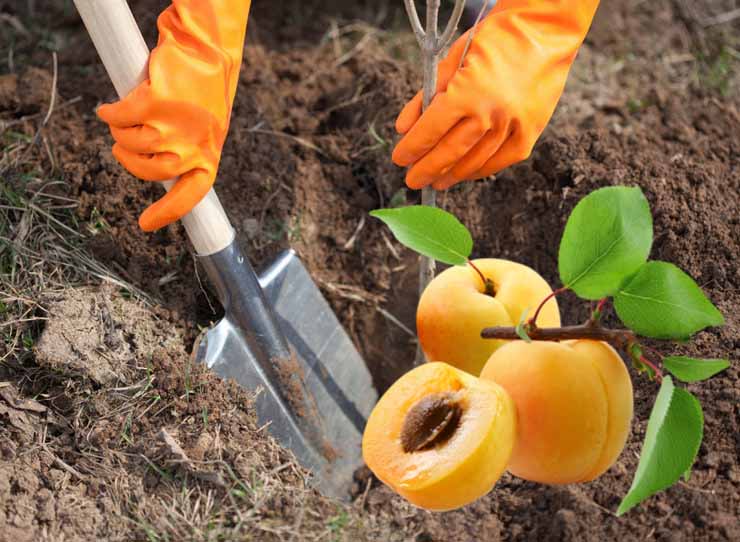
Is it possible to transplant an adult tree to another place
Experienced gardeners recommend replanting only apricot trees no older than 2 years. Older specimens experience severe stress during the procedure, so their chance of settling in a new place is minimal, but still there.
It happens that five-year-old trees successfully adapt to new growing conditions and in 2-3 years they please with a tasty harvest.
Summer transplant terms
To understand when is the best time to replant a tree, pay attention to the weather and age of the plant. For young seedlings, the optimal transplantation time is early or mid-June.
The weather should be warm, but not hot; a suitable air temperature is about + 18 ° С. An adult tree is transplanted at the end of summer, after fruiting. Harvest and carry out the procedure after 10-15 days.
Auspicious days according to the lunar calendar
With the help of the lunar calendar, gardeners determine favorable and unfavorable days for carrying out agrotechnical procedures.
June 24 is a good date for replanting a young apricot, while August 18 and 27 is a good time to replant a mature tree. However, choosing dates in accordance with the calendar alone is not enough - the weather must be suitable.
Choosing a new location
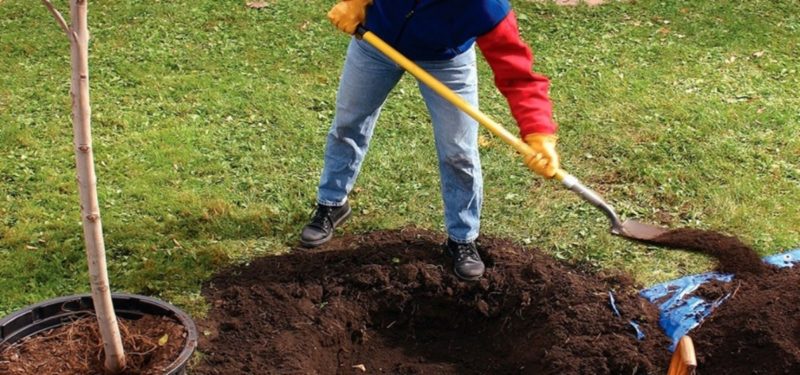
Apricot is a thermophilic plant, so it is planted in well-lit areas protected from the wind. The tree loves sandy-clay soil with neutral acidity.
Attention! The apricot has a lush and spreading crown, so the distance between the seedlings should be at least 3-4 m. If the tree is planned to be planted near a fence or garden buildings, it is recommended to keep a distance of 2.5-3 m from them.
If the soil is too hard and acidic, it is lime and refined sand is added. A drainage layer is built from crushed stone, gravel and dry branches. Drainage makes the ground breathable and lighter.
Favorable and unfavorable neighborhood
Apricot loves the sun, so if the surrounding trees and shrubs block the sun's rays, it will die. The culture has a powerful and developed root system, which takes all trace elements from the soil, leaving nothing to the plants nearby.
Unfavorable neighbors: apple, plum, walnut, black currant, raspberry (crops deplete each other). Suitable neighbors include garlic, lettuce, dill and green onions. They are even planted in the tree trunk circle.
Preparing apricots for transplanting
2-3 hours before the procedure, the tree is poured abundantly with warm water. Moisture is necessary for the soil to adhere to the roots, and they are not damaged during transplantation. A 60 cm deep trench is dug around the plant, the long roots are cut with a shovel and the apricot is placed in burlap or a prepared bag.
Attention! Only healthy trees are suitable for transplanting. They should not show signs of disease: spots, dry leaves, rot on the roots. It is recommended to carefully examine all branches and leaves.
It is impossible to transplant the apricot "dry": it will damage the weak roots of the plant, it will not take root well on the site.
Planting pit preparation
The planting pit is prepared a month before the transplant. The soil is dug onto a shovel bayonet, all debris and plant debris are removed. If in early April the land was not watered with boiling water, they do it now to protect the apricot from pathogens and insect pests.
The width of the hole should be such that the entire crown of the tree fits into it, the depth - all the roots. Fertilize the pit with a mixture of ammonium nitrate and superphosphate (200 g each).
How to properly transplant an apricot
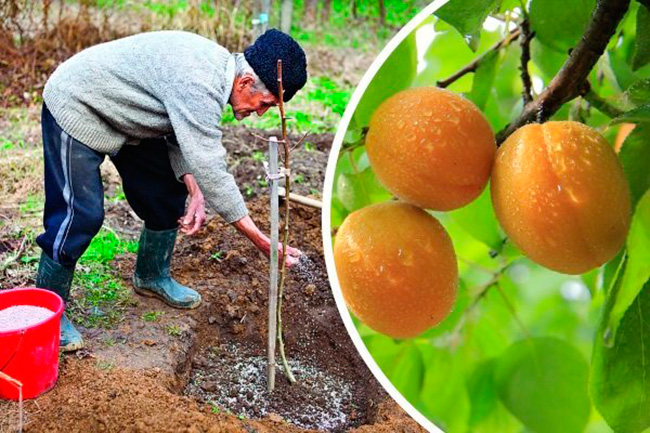
Before the procedure, it is important to prepare garden tools: a shovel, a watering can with water, a rake. It is recommended to disinfect it with a solution of potassium permanganate so that the tree does not become infected with diseases. Next, they proceed to the transplant itself:
- The dug out seedling is placed in a prepared hole in an upright position.
- Gently spread the roots with your hands and sprinkle them with light and loose soil.
- Create an earthen roller around the apricot, lightly press down on the soil.
- Water the apricot abundantly.
Mistakes to Avoid
In order for the apricot tree to quickly adapt to new conditions, summer residents try to comply with all the nuances of transplantation. However, even the most experienced gardeners sometimes make gross mistakes:
- make a planting hole just before the procedure, do not fertilize it and do not equip it with a drainage layer;
- do not water the plant before digging up and placing it in a new hole;
- planted apricots near pears, apple trees, walnuts;
- dig a small planting hole;
- damage the roots, handling them carelessly;
- bury the roots entirely, leaving no room for an earthen roller.
Transplant nuances for different varieties
Early-ripening apricot varieties, such as Tsunami or Ledana, are transplanted from early April to mid-June. They are unpretentious, frost-resistant, quickly adapt to climatic conditions.
Late varieties, such as Favorite or Medovy, are recommended to be replanted in July. The late-ripening apricot is capricious, so it is better to transfer it to a new place when the ground warms up enough and the air temperature reaches + 25 ° C. Otherwise, its immunity will weaken, and the yield will decrease.
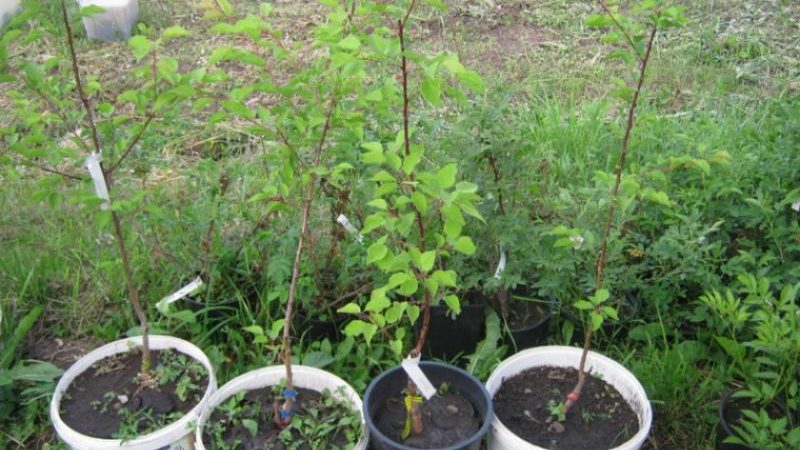
For different ages
If the tree is 5 or 6 years old, it is important to examine it again for signs of disease. Even if there are no obvious signs, but for some reason the branches are dry and thin, break easily, it is better to refuse a transplant.
Dryness indicates that the plant lacks trace elements, it is weakened. Complex mineral dressings will help to correct the situation: "Aminosol" or "Humate + 7 iodine". Fertilizers contain organic and humic acids, are easily absorbed, strengthen the immune system.
When transplanting a young tree, everything is easier. Fertilizing it before the procedure is optional; most importantly, pour water well.Summer residents recommend preheating the water in the sun. Watering with cold liquid can provoke the development of diseases and insect attacks.
For different regions
If the apricot is grown in the northern regions, it is recommended to prepare the planting pit not in 1, but in 2-3 months. For example, if a transplant is planned for June, the pit is prepared in late March or early April, when the snow melts.
In addition to superphosphate and ammonium nitrate, part of the rotted manure or peat is laid in it. Organic matter makes the fertilizer more nutritious and balanced, protects the roots from frost, and prevents the development of insects.
In the south, it is especially important to keep the distance between plants. If trees are planted too close to each other, their crowns will not be ventilated, which will lead to a decrease in yield.
Further care
After transplanting, the apricot needs regular and abundant watering. Especially it concerns regions with hot summer. About 12 liters of water are spent on one young tree, up to 20 liters on an adult. Water the plant in the trunk circle.
So that the water does not evaporate from the soil surface and penetrates deeply to the roots, an event is held in the morning or evening when there is no sun. Before each watering, the soil is loosened with a rake to a depth of 10 cm. Loosening prevents the development of weeds, retains moisture and makes the soil light.
Attention! To protect apricots from rodents and frost, at the end of autumn the stems and bases of skeletal branches are wrapped with a special garden net. They remove protection only at the beginning of April.
2-3 weeks after transplanting, the plant is treated with Actellik or Fufanon. They protect the apricot tree from the moth and moth, prevent the development of diseases: bacterial cancer and brown spot. Instead of these drugs, a solution of Bordeaux liquid is used: 100 g of the substance is diluted in 10 liters. Spray branches and leaves from all sides.
Experienced gardening tips
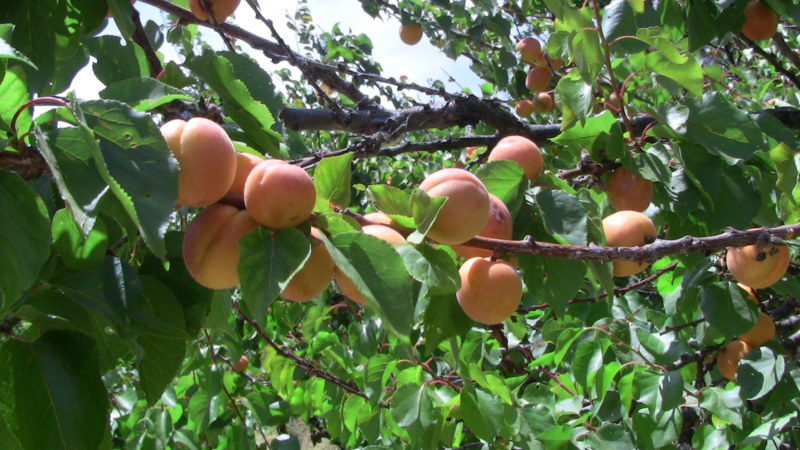
The advice of experienced gardeners helps to grow a rich harvest of apricots. With the help of simple recommendations, even a novice summer resident will receive ripe and juicy fruits:
- choose healthy plants for planting;
- follow the rules of the garden neighborhood;
- water the apricots with clean and warm water;
- plant the apricot in sunny, well-heated areas;
- choose a warm and windless day for the procedure;
- plant varietiessuitable for a specific region;
- do not forget to fertilize the plant and treat it against diseases.
Conclusion
Apricot transplant begins with the preparation of the planting pit. It should be such that all the roots of the tree fit into it without any problems, and the width accommodates the crown. The pit is fertilized with organic matter and mineral compounds, a drainage layer is laid. After a month, the tree is watered, carefully removed from the ground and placed in a new hole.
It is recommended to use trees no older than 2 years: they are distinguished by strong immunity and quick adaptation to new conditions. After the procedure, the apricot is again abundantly watered, loosened and mulched the ground.